1970 Plymouth Superbird 2-door hardtop
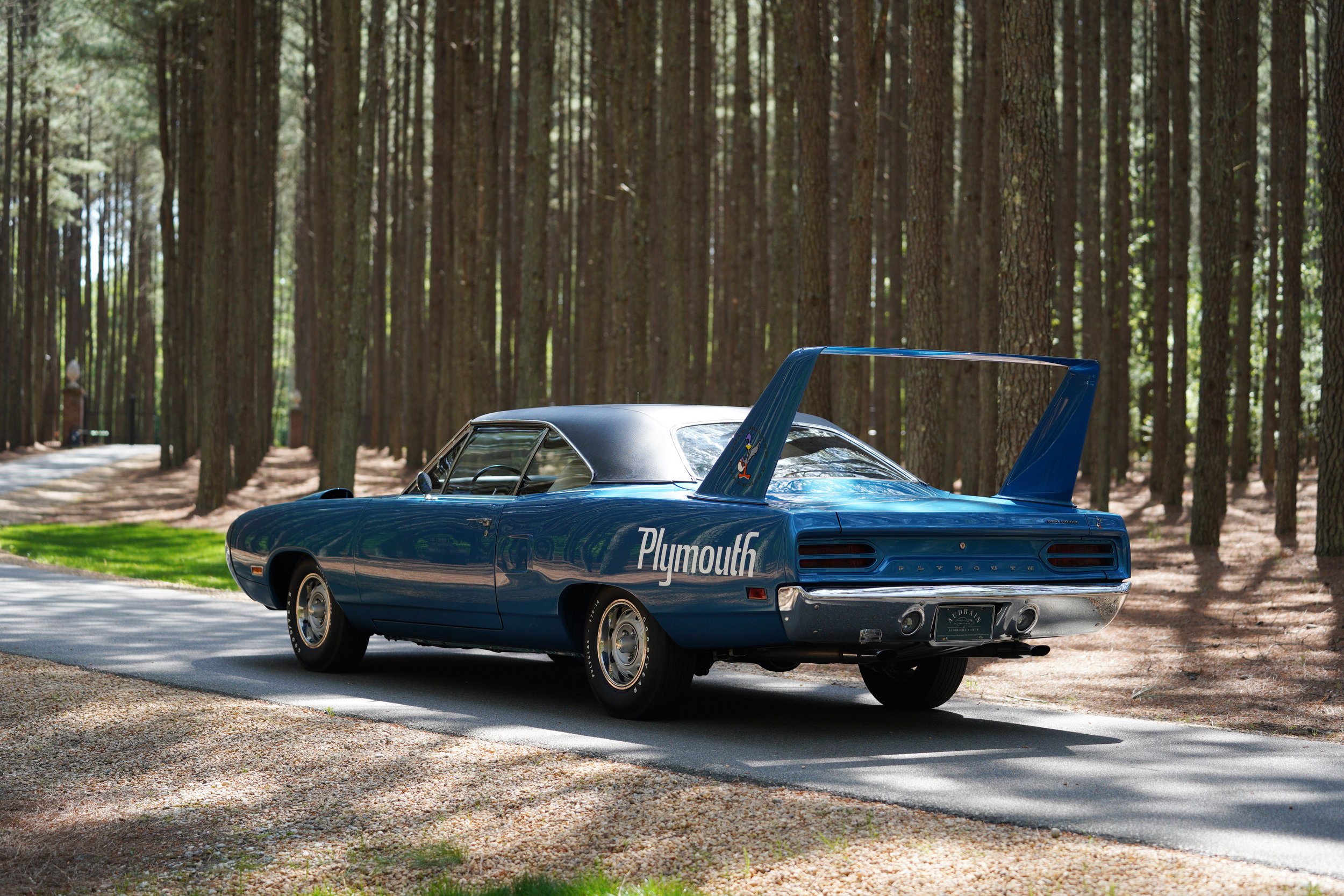
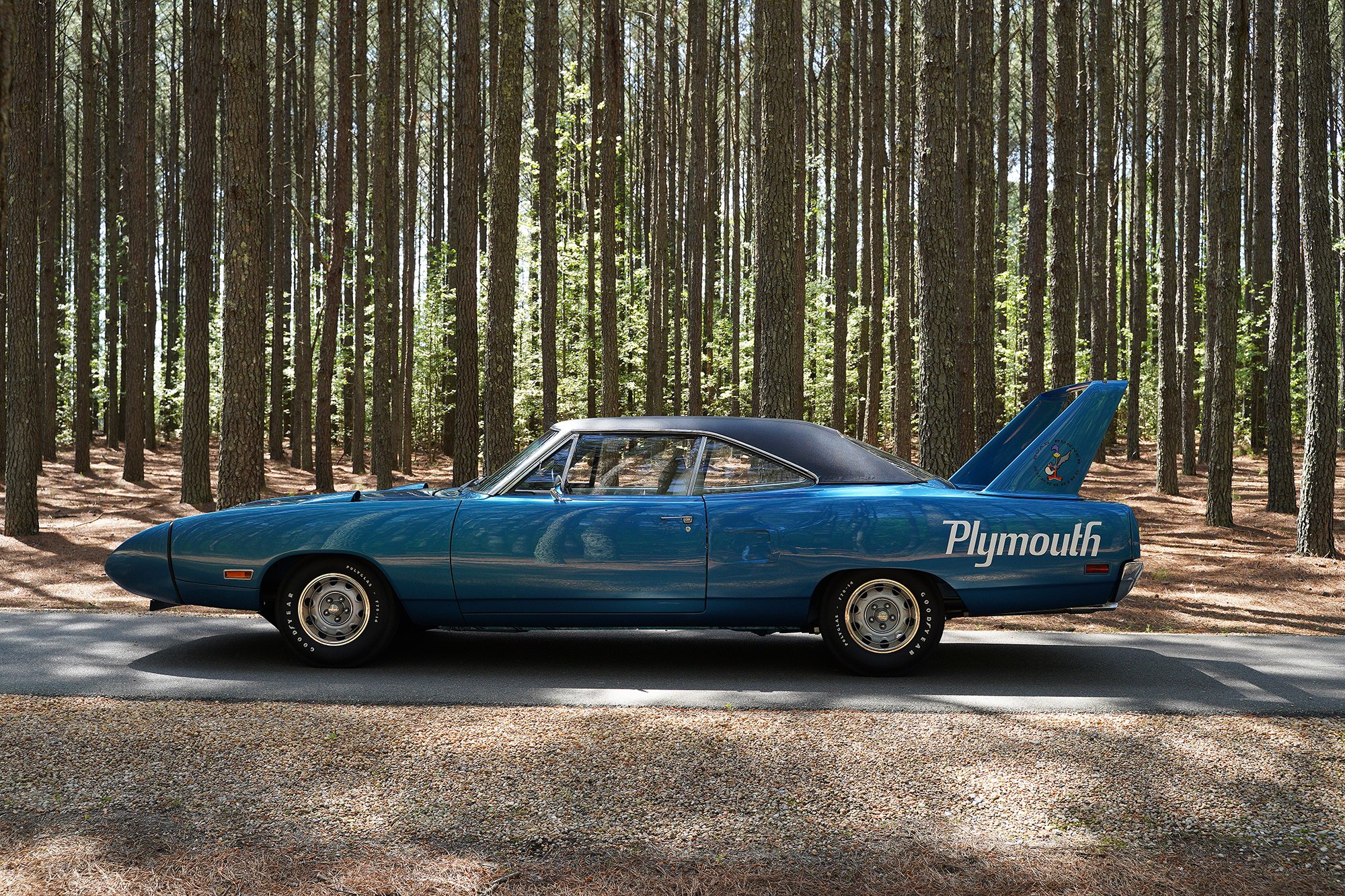
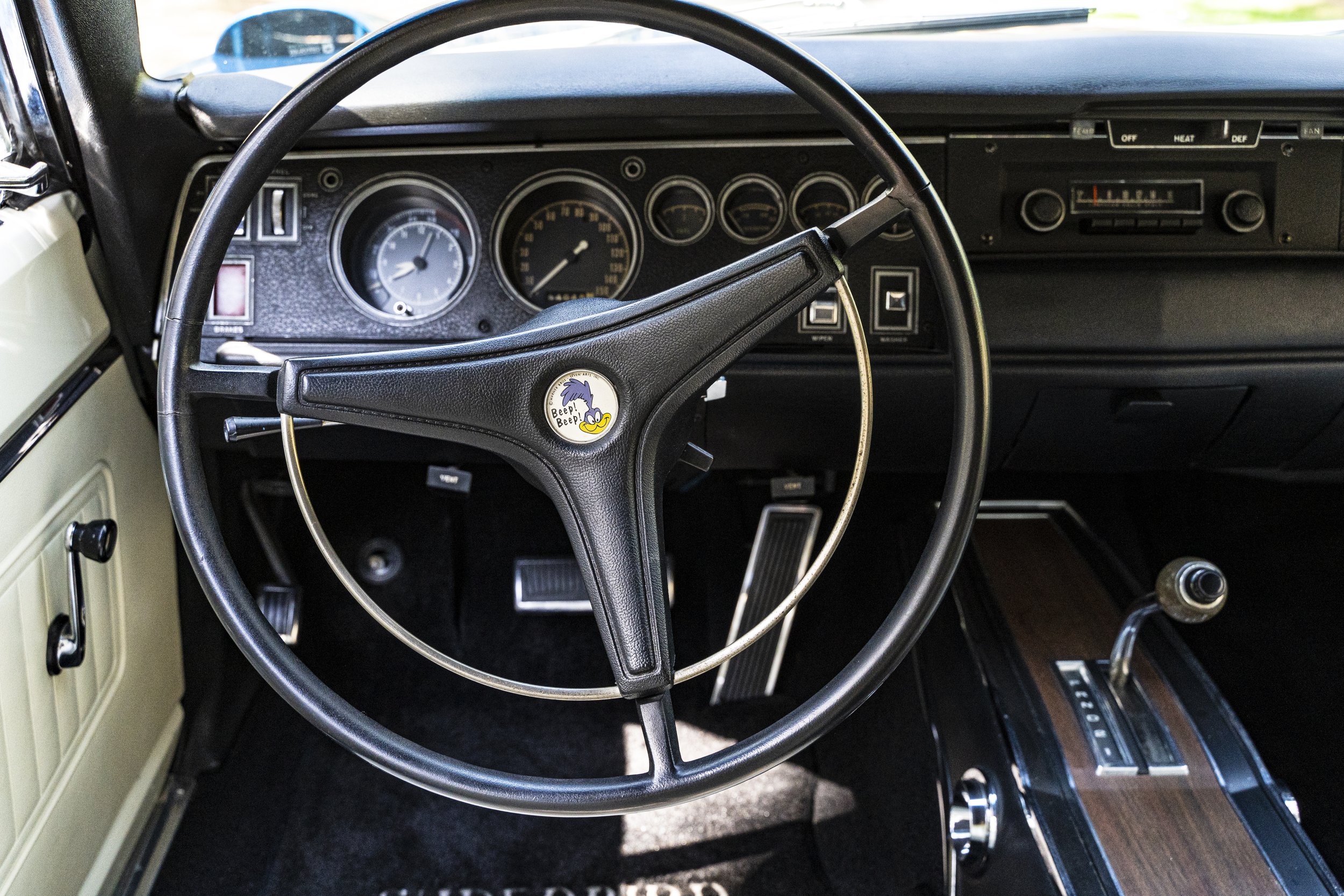
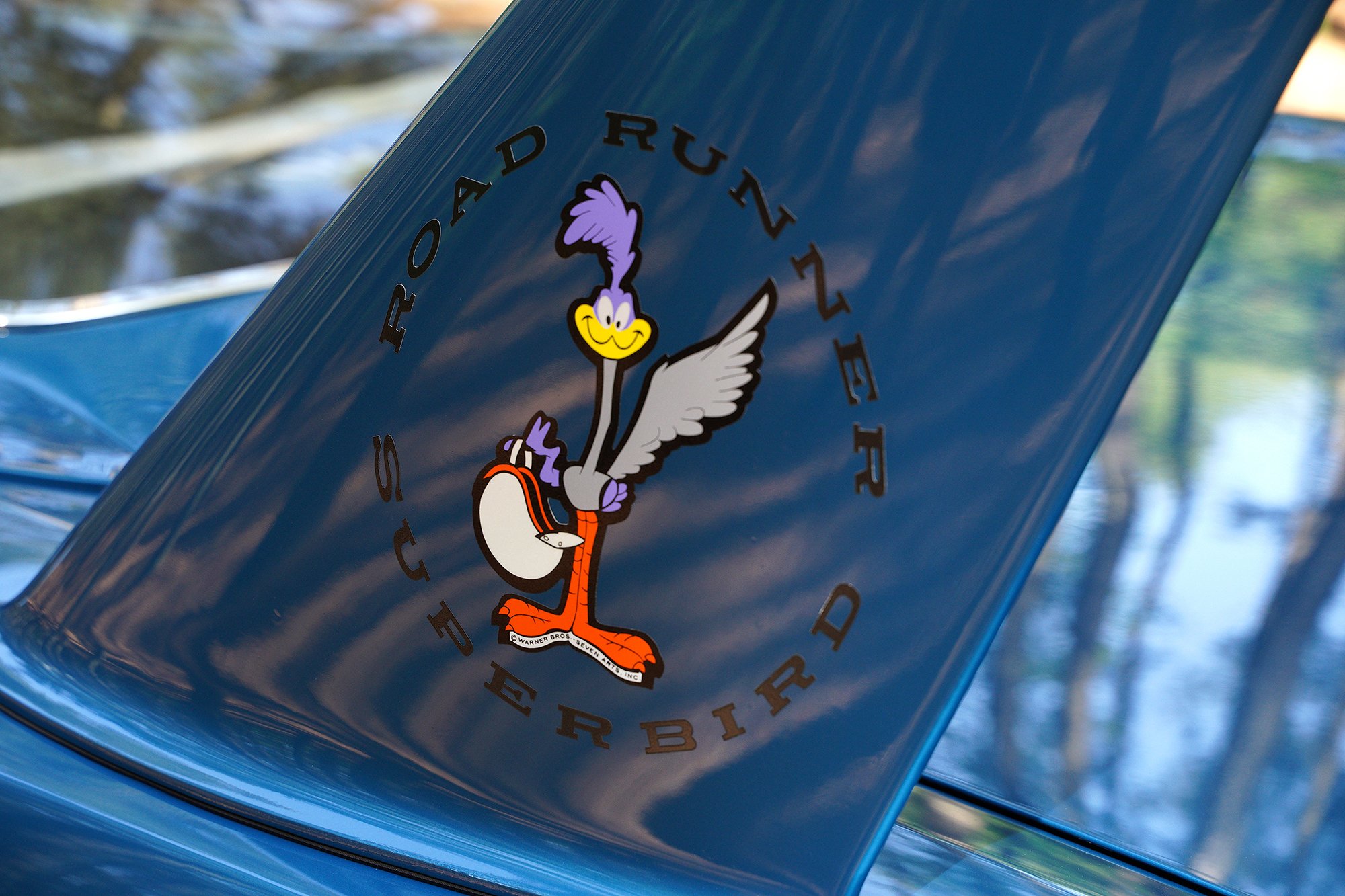
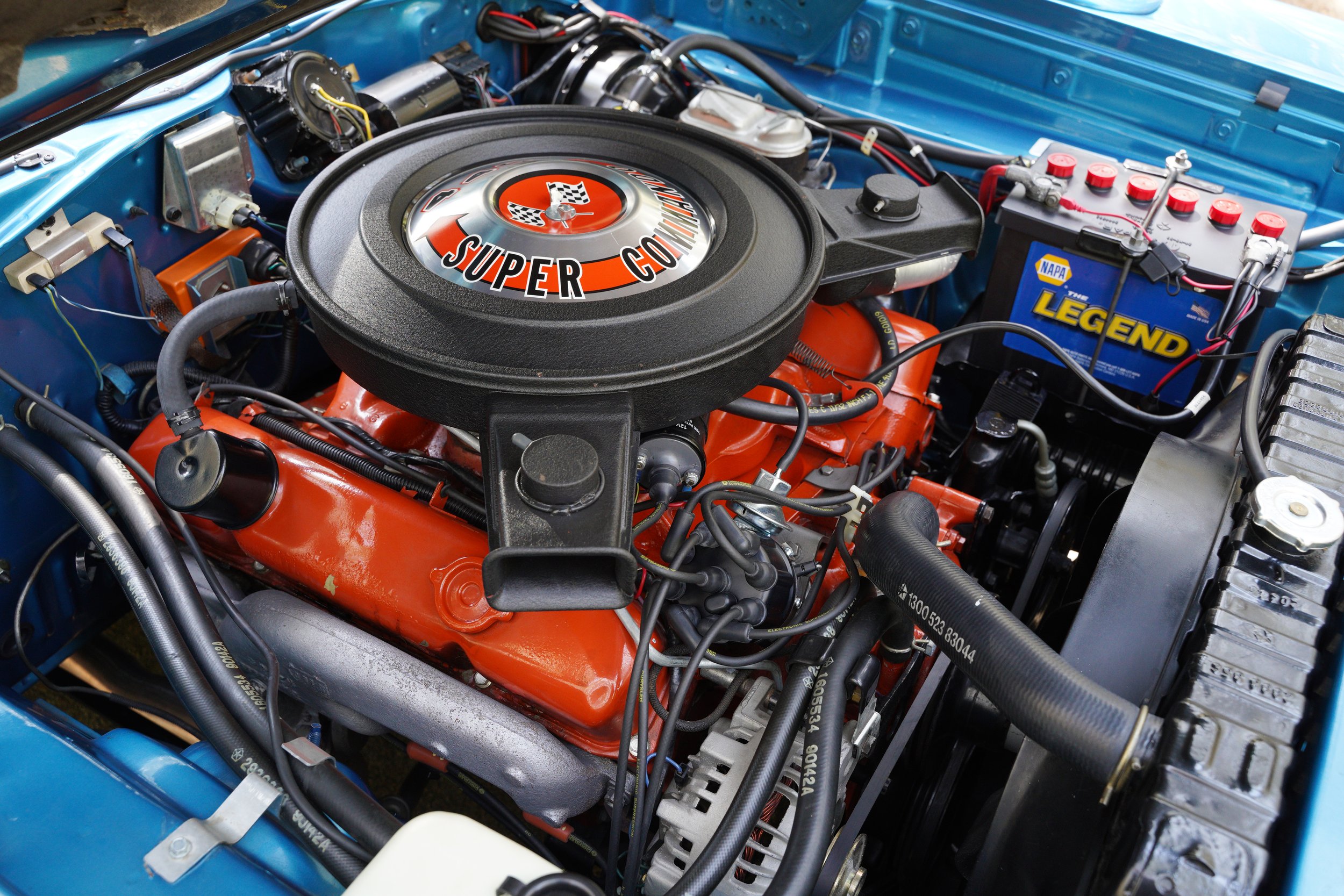
The Plymouth Road Runner Superbird along with its sister car, the Dodge Charger Daytona, showcases the design that changed NASCAR forever. With its extended nose cone and massive rear wing, the car was much faster and more capable than all competitors in 1970 and was the first NASCAR to surpass the 200 MPH barrier.
The 1960s was a competitive time for NASCAR, with Ford/Mercury and Dodge/Plymouth dueling it out for the top spots in the series. At this time, cars competing in the NASCAR series were modified versions of road cars sold to the public, with companies required to sell more than 500 cars to compete in the series. The standard recipe for improving performance was to make the engine larger and consequently produce more horsepower, though most of the cars were at their performance limits and did not handle well at high speeds. In 1969, Ford introduced the Torino Talladega and similar Mercury Cyclone, beginning the ‘aero wars’ era of NASCAR. These cars incorporated a slightly longer, more aerodynamic front end, giving them a significant advantage over other cars in the class, especially on longer ‘super-speedways’ where the cars could reach a higher top speed. With such an advantage, Ford was able to pull superstar driver Richard Petty away from Plymouth for the 1969 season. Plymouth needed to act quickly if they wanted to remain competitive.
Chrysler began to utilize employees from their missile division in engineering the Dodge Daytona and Plymouth Superbird, with John Pointer from the missile division serving as lead designer on the project. Aerodynamicist Gary Romberg refined the now-iconic extended nose cone and enormous rear wing. Dodge General Manager, Rob McCurry called the design the ugliest car he had ever seen, though when the designers guaranteed the car would win, he signed off to put the Charger Daytona and Road Runner Superbird into production. The car was able to lure Richard Petty back to Plymouth’s NASCAR team, leading to the iconic #43 Superbird that was so dominant that year. The Daytona and Superbird won 33 out of 48 races they competed in during the 1970 season, but unfortunately, NASCAR regulations changed, and the cars were essentially outlawed prior to the 1971 season.
The Road Runner Superbird lives on today as perhaps the most iconic muscle car of all time, and the car that changed NASCAR forever. While it was dominant on the racetrack, it carried a friendly persona off the track. The Road Runner cartoon was included in multiple places on the car, giving the car a friendly charm. The car also includes a horn that resembles the cartoon’s ‘meep meep’ sound. The overall design was seen as extreme by many enthusiasts, and was clearly designed to compete on the NASCAR circuit,
Specifications:
Engine: 426 cu in V-8, 3x Holley 2-barrel carburetor
Transmission: 3-Speed Automatic
Power: 390 hp
Torque: 490 ft-lbs, 664 Nm
Length: 221 in
Width: 76.4 in
Height: 61.4 in
Wheelbase 116 in
0-60 MPH: 5.9 sec, quarter-mile 14.2 sec
Top Speed: 137 mph
Fuel Economy: 7.7 mpg
Weight: 3785 lbs

